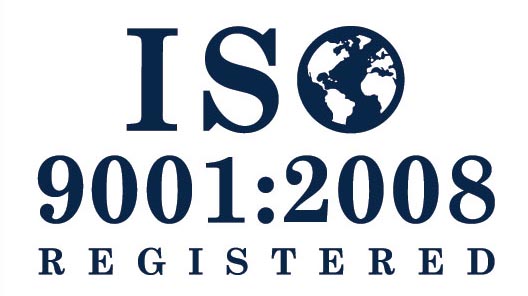Breast Reconstruction
Breast Reconstruction
“Health tourism Brazil – Plastic Surgery Breast Reconstruction and Breast Cancer, to rebuild a natural-looking, brazilian medical care. ”
Mammary reconstruction comprises a group of surgical techniques and procedures that seek to rebuild a natural-looking breast.
The goal of mammary reconstruction is to minimize the mutilation resulting of a mastectomy, favoring a better and faster physical and psychological rehabilitation of the patient, as well as speedier social, emotional, sexual and professional reintegration.
It is not the solution to all physical and emotional problems caused by the mastectomy, but it is an important part of rehabilitation, for it benefits the patient’s self-image and it is not prejudicial to the natural evolution of the disease. As a matter of fact, since this group of procedures aid in reducing stress, it is believed to have a positive impact on the patient’s recovery.
TECHNIQUES APPLIED TO BREAST RECONSTRUCTION
FLAP RECONSTRUCTION USING ABDOMINAL FLAPS (TRAM FLAP)
The TRAM flap enables the reconstruction of the volume and shape of the new breast through the transfer of an ellipsis of skin, fat and abdominal muscles to the area of the mastectomy via a tunnel beneath the skin surface. In order to guarantee blood supply, one or both rectus abdominis muscles may be used. At the end of the surgery, the patient will have some abdominal scarring, similar to those of a traditional abdominoplasty. In many cases, a surgical mesh will be placed on the area, as to strengthen the abdominal wall, avoiding loss of strength and diminishing the possibility of an abdominal hernia.
The TRAM flap is recommended forpatients who have suffered significant loss of skin and thoracic coverage, and/or when the opposing breast is of large size and volume. Because of this, the main prerequisite for this technique is that the patient presents an adequate donor area, with sufficient abdominal volume.
Bruising, seroma, flaccidity, abdominal hernia or flap necrosis may occur as a result of this procedure.
FLAP RECONSTRUCTION USING THE LATISSIMUS DORSI MUSCLE FLAP
The latissimus dorsi muscle flap is another option used in breast reconstruction, though this technique requires the use of a prosthetic silicone implant to give volume to the new breast.
Surgery involves making an incision on the back, which will leave a permanent scar that is generally hard to disguise while wearing underwear or swimwear.
The flap is transferred and positioned at the patient’s thorax, in order to correct skin loss and to give volume to the new breast.
Complications and limitations to this procedure are similar to those of the TRAM flap. This technique is safe and obtains great results.
TISSUE EXPANDERS
Breast reconstruction via temporary tissue expanders utilizes a silastic implant that is periodically and progressively inflated with a saline solution, allowing the expansion of the skin and pectoral muscle, creating a pocket in which a permanent silicone implant be placed in substitution of the temporary silastic implant. The second stage of the procedure, with the placement of the permanent silicone implant, is usually done 3 to 6 months after the start of the treatment with the temporary expander.
The expander may be placed during the mastectomy, or at a later time, usually no longer than 3 to 9 months after the mastectomy.
Another type of reconstruction makes use of an expander considered “permanent”, containing a tissue expander located within a silicone implant that is distended through a remote valve in which saline solution is injected as to increase volume. The use of this technique is limited and is not fitting for all cases. Though its objective is to reduce the number of surgeries of the patient, further surgeries might be needed to improve final results.
Bruising, seroma, capsular contracture, rejection of the expander or of the silicone implant may occur.
IMMEDIATE RECONSTRUCTION WITH THE USE OF PROSTHETICS
Though there have been an increase of early diagnosis of breast cancer and of the number of prophylactic mastectomies, breast reconstruction with the immediate use of silicone implants is still very limited.
The use of this technique depends on the remainder of excess skin, of subcutaneous tissue, of the presence of the large pectoral muscle or of the use of a lateral dorsal thoracic flap.
This technique is not frequently employed, for results may be insufficient in the event of the implant not being fully covered or isolated from skin. The type of implant used will depend of the assessment made by the surgeon. Implants may be textured or polyurethane-coated.
Bruising, seroma, capsular contracture or rejection of the silicone implant may occur.
RECONSTRUCTION OF THE NIPPLE-AREOLAR COMPLEX
Usually takes place weeks after breast reconstruction and may make use of several techniques. Nipple reconstruction can be carried out through the use of flaps or grafts harvested from the opposing breast. The areola can be rebuilt with the use of skin grafted from the upper thigh, and may be tattooed as to better match the skin color of the contralateral breast.
TREATMENT OF THE BREAST OPPOSING THE MASTECTOMIZED BREAST
The contralateral breast of the affected breastmay be treatedas to provide symmetry, by means of mastopexy, reduction mammoplasty or augmentation mammoplasty with use of a silicone implant.
This surgery should proceed at a latter time, some months after breast reconstruction, in case of reconstruction through flaps or tissue expanders.
In the event of the diagnosis of pathology on the contralateral breast, in cases of family history, or the finding of genetic alterations such as positive BRCA 1 and 2, the possibility of a prophylactic mastectomy of this breast should be discussed.
All information provided on this page is merely for patient instruction and enlightenment. It is not specific medical advice and does not intend to substitute a formal doctor-patient relation.
Every patient presents a different case and not all patients make the same options. Each patient has a unique tissue and thus results may vary from person to person.
TOP

